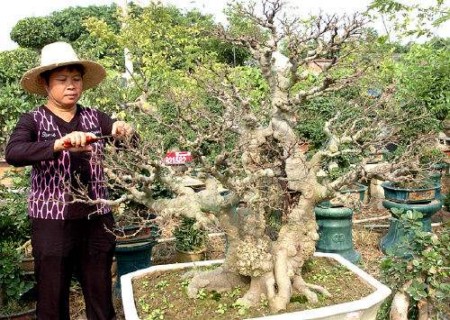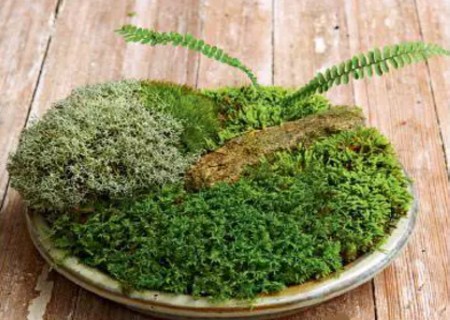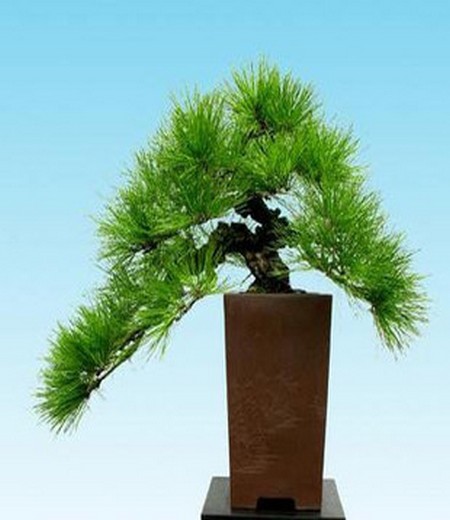The method of making Pushu bonsai
Park Shumeng has a strong hair force and is easy to take root, and most of the ancient stumps are excavated from the wild. The southern region chooses more mining in March, when the temperature rises, the humidity is high, and the excavated trees are not easy to be air-dried and easy to survive. When digging, we should choose stumps with old, good tree shape, dwarf trunk and natural curved trunk. After digging up, it can be wrapped with yellow mud roots or plastic film, and then processed and planted after being transported back. This kind of tree is often cultivated for bonsai.
The bark of Pushu is smooth and gray in color. it is characterized by alternate leaves, long petiole, leathery leaf blade, broadly ovate to narrowly ovate, apex acute to acuminate, base rounded or broadly cuneate, oblique, shallowly serrate above the middle, Ternate veins, glabrous above, sparsely hairy along veins and axils below. Pushu mainly uses artificial propagation and mountain mining to obtain this kind of bonsai plant.

I. material selection and cultivation measures
1. Artificial propagation: Park trees are usually propagated by sowing. The seeds are ripe from September to October and the fruits are reddish brown. They should be harvested in time, spread out to dry, remove sundries, and mix with sandy soil for storage. Sowing in March of the following spring, seed treatment should be carried out before sowing, smashing the seed shell with a wooden stick, or scraping the outer seed coat with sand before sowing, which is conducive to seed germination. It is better for the seedbed soil to be loose, fertile and well drained sandy loam. After sowing, it is covered with a layer of fine soil about 2 cm thick, then covered with straw and watered once. After about 10 days, it can begin to sprout, and the grass will be uncovered in time after emergence. Seedling stage to do a good job of maintenance and management, pay attention to loose soil, weeding, topdressing, and appropriate seedlings, the seedlings can be as high as 30cm to 40cm. To cultivate young seedlings for bonsai, we should pay attention to pruning and shaping, "restrain the top and promote the side", control the height growth of the seedlings, promote the thickening of the trunk and the growth of lateral branches, so as to facilitate pot processing and modeling.
2. Mountain mining: Pushu is commonly distributed wild in the hills and low mountains and valleys in the Yangtze River basin and its south. It can dig the old piles of Gucci, which has been cut down for many years, and "raise embryos". After pruning, the root system is developed, new branches are sprouted, and then cultivated. After 1-2 years, the potted trees can be made into vigorous and simple bonsai in a short period of time.
Second, the process of potting.
1. Selection basin: Park tree bonsai is famous for its antiquity, it is appropriate to use purple sand pottery basin or glazed pottery basin, the shape of the basin is rectangular, square or oval, depending on the tree shape. Because the leaves are dense, the leaves are dark green, and the bark is grayish brown and rough, so the basin color is light yellow or ochre brown, which plays a contrasting role.
2. Using soil: Pushu does not choose soil quality and has strong adaptability, but grows better on sandy loam with fertile, loose and good drainage. Bonsai cultivation is generally made of pastoral soil mixed with sandy soil or rice chaff ash.
3. Planting: it should be done after autumn or before sprouting in spring. When planting, the root system should be pruned properly, cut off the overlong main root, leave more lateral root and whisker root, obstruct to loosen the soil, and prune the branches and leaves properly at the same time. If you plant in a medium-shallow pot, you should use wire to fix the root at the bottom of the basin to avoid lodging.
Third, orthopedic techniques
1. Processing: the modeling of Pushu mostly uses the method of coarse binding and fine cutting, while the big tree processing of Lingnan School adopts the method of pruning completely, imitating the painting techniques of Lingnan, paying attention to cutting skills, storing branches and truncation, and paying attention to the effect of overall composition. The processed pile scene can maintain a beautiful shape no matter when the branches and leaves are luxuriant or when the leaves fall in winter.
2. Tree shape: Park tree bonsai is suitable for making straight dry type, oblique dry type, curved dry type, horizontal dry type or stone-attached type and so on. Branches and leaves can be tied or trimmed into steamed bread-shaped circles, or processed into natural trees.
IV. Maintenance and management
1. The branches of Pushu are flexible, not easy to break and easy to shape. In addition to the visible bud eyes, there are many adventitious buds on the branches, so it is easy to select the branches. The degree of callus is stronger than that of elm, and the larger wound can heal with almost no trace.
2. Because of the large leaves of Pushu, more consideration should be given to the design of elegant and chic towering type in the composition of bonsai. If it is a big tree pile, the location of the branches should be evacuated, so that the appearance will not be too dense and have no charm of gathering and dispersing.
3. Pushu is more resistant to drought and should not be watered too much. The basin soil should be kept moist in spring and summer, and less watering in autumn.
4. Park Shumeng has strong hair ability. When the new branch grows to 6cm-8cm, 3 leaves will be left and the rest will be cut off. Usually, it is advisable to pick buds and remove shoots at any time to maintain the shape of the tree.
5. Change the basin every 2-3 years, the best time is before sprouting in spring, or in autumn. It should be combined with changing pots, pruning old, weak and residual roots to promote the development of new roots.
6, Pushu Xiguang, should be placed in sufficient sunshine, air circulation, except in midsummer, generally do not need shade, winter can be slightly cold-resistant.
Time: 2019-05-26 Click:
- Prev

How to make moss bonsai
Bryophytes like dark and humid environment, generally grow on exposed stone walls, or wet forests and swamps, have indomitable vitality. Moss is a good substrate for bonsai. Bryophytes belong to the lowest plant, flowerless, seedless, reproduce by spores, and have a simple structure.
- Next

How to make Penglai bonsai
Penglai pine is a popular bonsai with tall and straight stems, emerald green color and luxuriant leaves. However, Penglai pine cultivation management is simple, and good shade resistance, suitable for small and medium-sized pot planting, is a good product for bonsai production. Then how to make Penglai bonsai? Next
Related
- Fuxing push coffee new agricultural production and marketing class: lack of small-scale processing plants
- Jujube rice field leisure farm deep ploughing Yilan for five years to create a space for organic food and play
- Nongyu Farm-A trial of organic papaya for brave women with advanced technology
- Four points for attention in the prevention and control of diseases and insect pests of edible fungi
- How to add nutrient solution to Edible Fungi
- Is there any good way to control edible fungus mites?
- Open Inoculation Technology of Edible Fungi
- Is there any clever way to use fertilizer for edible fungus in winter?
- What agents are used to kill the pathogens of edible fungi in the mushroom shed?
- Rapid drying of Edible Fungi

